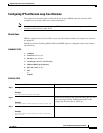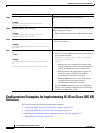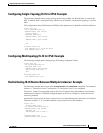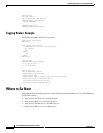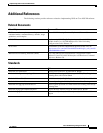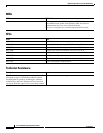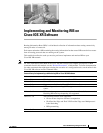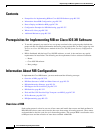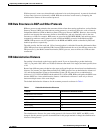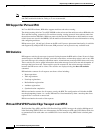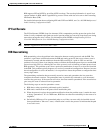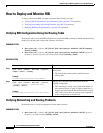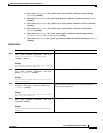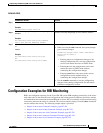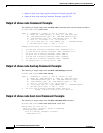
Implementing and Monitoring RIB on Cisco IOS XR Software
Information About RIB Configuration
RC-321
Cisco IOS XR Routing Configuration Guide
OL-14356-01
Within a protocol, routes are selected based on the metrics in use by that protocol. A protocol downloads
its best routes (lowest or tied metric) to RIB. RIB selects the best overall route by comparing the
administrative distance of the associated protocol.
RIB Data Structures in BGP and Other Protocols
RIB uses processes and maintains data structures distinct from other routing applications, such as Border
Gateway Protocol (BGP) and other unicast routing protocols, or multicast protocols, such as Protocol
Independent Multicast (PIM) or Multicast Source Discovery Protocol (MSDP). However, these routing
protocols use internal data structures similar to what RIB uses, and may internally refer to the data
structures as a RIB. For example, BGP routes are stored in the BGP RIB (BRIB), and multicast routes,
computed by multicast routing protocols such as PIM and MSDP, are stored in the Multicast RIB
(MRIB). RIB processes are not responsible for the BRIB and MRIB, which are handled by BGP and
multicast processes, respectively.
The table used by the line cards and RP to forward packets is called the Forwarding Information Base
(FIB). RIB processes do not build the FIBs. Instead, RIB downloads the set of selected best routes to the
FIB processes, by the Bulk Content Downloader (BCDL) process, onto each line card. FIBs are then
constructed.
RIB Administrative Distance
Forwarding is done based on the longest prefix match. If you are forwarding a packet destined to
10.0.2.1, you prefer 10.0.2.0/24 over 10.0.0.0/16 because the mask /24 is longer (and more specific) than
a /16.
Routes from different protocols that have the same prefix and length are chosen based on administrative
distance. For instance, the Open Shortest Path First (OSPF) protocol has an administrative distance of
110, and the Intermediate System-to-Intermediate System (IS-IS) protocol has an administrative
distance of 115. If IS-IS and OSPF both download 10.0.1.0/24 to RIB, RIB would prefer the OSPF route
because OSPF has a lower administrative distance. Administrative distance is used only to choose
between multiple routes of the same length.
The default administrative distances for the common protocols are shown in Table 1.
The administrative distance for some routing protocols (for instance IS-IS, OSPF, and BGP) can be
changed. See the protocol-specific documentation for the proper method to change the administrative
distance of that protocol.
Table 1 Default Administrative Distances
Protocol Administrative Distance Default
Connected or local routes 0
Static routes 1
External BGP routes 20
OSPF routes 110
IS-IS routes 115
Internal BGP routes 200



